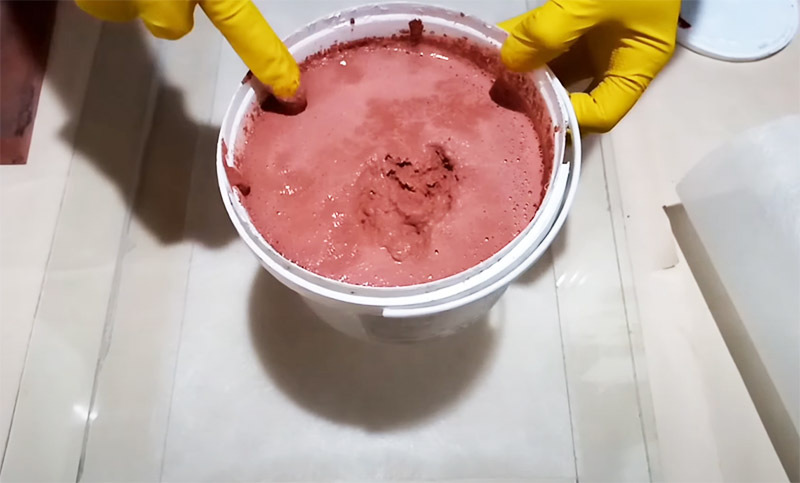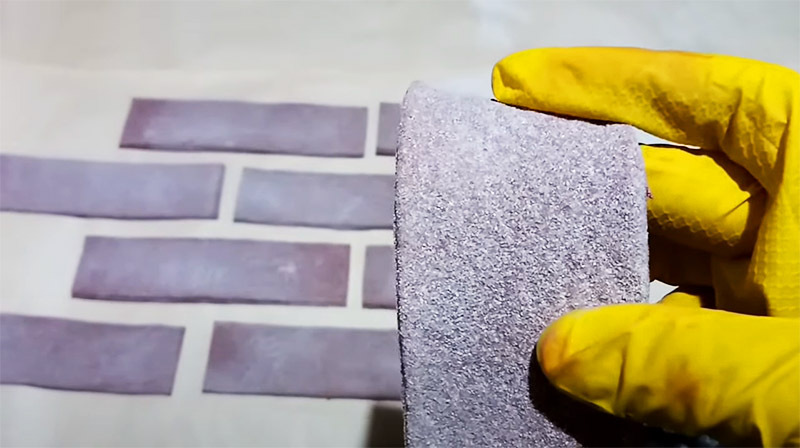The range of finishing materials today is very wide, if not huge. However, in order to make a high-quality finish, sometimes large financial investments are required, not to mention design work. In today's article, we will talk about saving, namely, making a flexible stone at home, the cost of which in stores is quite high. And the author of the YouTube channel offers his solution to this issue with the help of improvised tools. "Marble".
Read in the article
- 1 What is required to make a flexible stone with your own hands
- 2 Preparation of the base for the manufacture of flexible stone
- 3 The sequence of actions in the manufacture of material for finishing
- 3.1 Giving structure to flexible stone
- 4 Giving a flexible stone to the required shape
- 5 Day two: final touches
- 6 Finally
What is required to make a flexible stone with your own hands
In order to start making a flexible stone at home, you need to purchase a special polymer composition, which will be the basis of the future finishing material. As a filler, you can use marble, basalt or granite chips. However, such positions also require certain financial costs, so even simple quartz sand is enough to make a really budget finishing material.

When mixed with a polymer composition, any colorant can be added to the sand, depending on the desired shade. And this is also an undoubted advantage of hand-made production. The approximate ratio of sand to polymer mixture is 3/1.

Preparation of the base for the manufacture of flexible stone
First you need to prepare a flat surface. This can be a workbench or a regular table. Glass can be used to make the surface perfect.
The shape for the future flexible stone is laid in the following sequence:
- Large glass placed on a workbench or table.
- Fiberglass, which will become the basis of a flexible stone.
- Fiberglass is pressed with two strips of glass (fiberboard, laminate). This element not only holds the fiberglass in place, but also sets the thickness of the future flexible stone.
That, in fact, is all. When the base is prepared, you can proceed directly to the very manufacture of the finishing material.

The sequence of actions in the manufacture of material for finishing
First, the mixed mass is laid out on fiberglass. This work is the simplest, one might say - elementary.

Now it needs to be carefully leveled. This can be done with an ordinary trowel. If the canvas is large, a rule or even a flat rail is suitable for leveling. In this case, the height of the strips pressing on the sides of the fiberglass will become a limiter for the thickness of the finished material.
Perfect leveling of the surface is not required at this stage. It is enough for the mixture to be more or less distributed over the base.

Giving structure to flexible stone
In the next step, you can give the stone a certain structure. For this, as an option, the surface can be covered with marble or granite chips. Here you can highlight the structure of the product if the crumb being poured is much lighter than the mixed composition.

Next, another layer of fiberglass is laid on the covered surface. Although even ordinary cellophane film is suitable here. Through it, the material must be rolled with a rigid roller. It is desirable if it is structural. The pressure on the roller should not be strong, but sufficient for the crumb to adhere to the surface. After rolling, the film or fiberglass is removed.

Giving a flexible stone to the required shape
When the finished flexible stone is dry, it can be easily cut with scissors, but it is better to take care of the tool by giving the material the desired shape in advance. To do this, you need to make the simplest tool.
As the basis of the tool, you will need a small section of a drywall profile, the ends of which are trimmed and folded. The result is a tool that can be used to shape a stone that has not yet dried up. For convenience, you can screw the handle to it.

And now it's time to remember cutting dough on dumplings with an ordinary glass. Everything happens in a similar way here. Only the fiberglass base remains uncut.

Day two: final touches
The next day, when the polymer composition is dry, you can continue to work. To begin with, removing a layer of flexible stone from a glass base, it is laid on a film and fractions of crumbs that have not adhered are swept away from it. This can be done with a regular brush.

It remains only to cut the fiberglass along the lines, after which you can assess the quality of the final result. Now nothing prevents from starting to decorate the apartment with expensive material, on which minimal funds were spent.

Finally
The undoubted advantages of such a material are durability and aesthetic appearance. And if you make it yourself, then cheapness and the possibility of tinting for any interior come to the fore. In addition, it becomes possible to give a flexible stone of any shape. But this is not the main thing either. This material is suitable for finishing not only inside dry rooms. It can be used in the bathroom, in the kitchen, or it can be used for wall cladding outside.
We very much hope that the information presented today will be useful to our dear reader. HouseChief editors will definitely answer all questions that might arise in the process of reading the article. You just need to state the essence in the comments below. There you can also discuss with other readers how rational work on the manufacture of flexible stone, as well as whether it is worth doing it or is it better to purchase ready-made material in store. Or maybe you yourself were engaged in similar work? Then write about it. The rest of the readers will definitely find this information useful. We also ask you not to forget about the assessment of what you have read. Your feedback is extremely important to us. Take care of yourself, your loved ones and be healthy!

